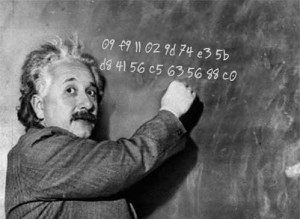Do you ever think a writing task is going to take about 20 minutes, and it winds up clocking in at 40? Frustrating, huh? Especially because those 40 minutes probably involved a lot of maddening rearranging of text until you finally got a cohesive flow, or you just surrendered and hit “Send.”
Why this happens
How can we get better at avoiding unwieldy documents that suck us down like quicksand? My suggestion comes in the timely form of a trick and treat. The trick is trotting out a math concept in a blog about writing tips. The treat is noting how a math concept can lead us into organizing our writing more effectively and making us more comfortable writers.
First the math: Let’s say you are planning the agenda for a meeting about an approaching event. You want to discuss three items: activities (a), budget (b), and communications (c). How many ways can you organize the agenda? Well, the order could be abc, acb, bac, bca, cab, and cba. That’s six, which jibes with what we learned in advanced algebra class (or forgot a long time ago): “3 factorial” (3 x 2 x 1) equals 6.
Therefore, if we organize the agenda at random, we will have only a one in six chance of ending up with the ideal order. But if we give the order a few seconds of thought, we might realize the best order is bac.
In other words, we might not realize it, but we often act effectively by thinking through an optimal order even when the possibilities are staggering. Driving around to take care of five errands on our day off has 120 possible orders (5 x 4 x 3 x 2 x 1). Ambitiously tackling 10 items on our day off? More than 3.6 million possible routes.
So what are the implications of all this geeky math when it comes to our writing? That rushing into starting a document when we’re covering a number of elements will probably yield a rough draft needing considerable rearranging. (And the cut-and-paste feature at our fingertips does often seduce us into starting before we’re ready.)
What to do about it
The obvious solution? Pause to “outline” the order before beginning to write. But no, the outline doesn’t need to look anything like the polished outlines we handed in back in school. Our outline can be crude notes on a piece of scrap paper, key words on separate scraps, or phrases on our computer screen. We can use numbers, arrows, staples, or tape to put them in order. And voila! We have an outline that will yield a coherent message and save us time in the long run.
As with so many aspects of continually becoming a more proficient writer, developing a sixth sense helps. When we pay attention to our premonition that a particular draft might get unwieldy before we tame it, pause to put the points in order. That thwarts immediate gratification, but we learned as kids “slow and steady wins the race.”
Postscript: That sixth sense is especially important when we’re about to phone someone to discuss several items. If we have three or more items on our mind and haven’t determined the optimal order, we run the risk of having a rambling conversation or leaving a disjointed phone message––or maybe needing to leave two messages because the first one was so inefficient.
The pause to plan pays off.
In addition to presenting workshops on writing in the workplace, Norm Friedman is a writer, editor, and writing coach. His 100+ Instant Writing Tips is a brief “non-textbook” to help individuals overcome common writing errors and write with more finesse and impact. Learn more at http://www.normfriedman.com/index.shtml.

